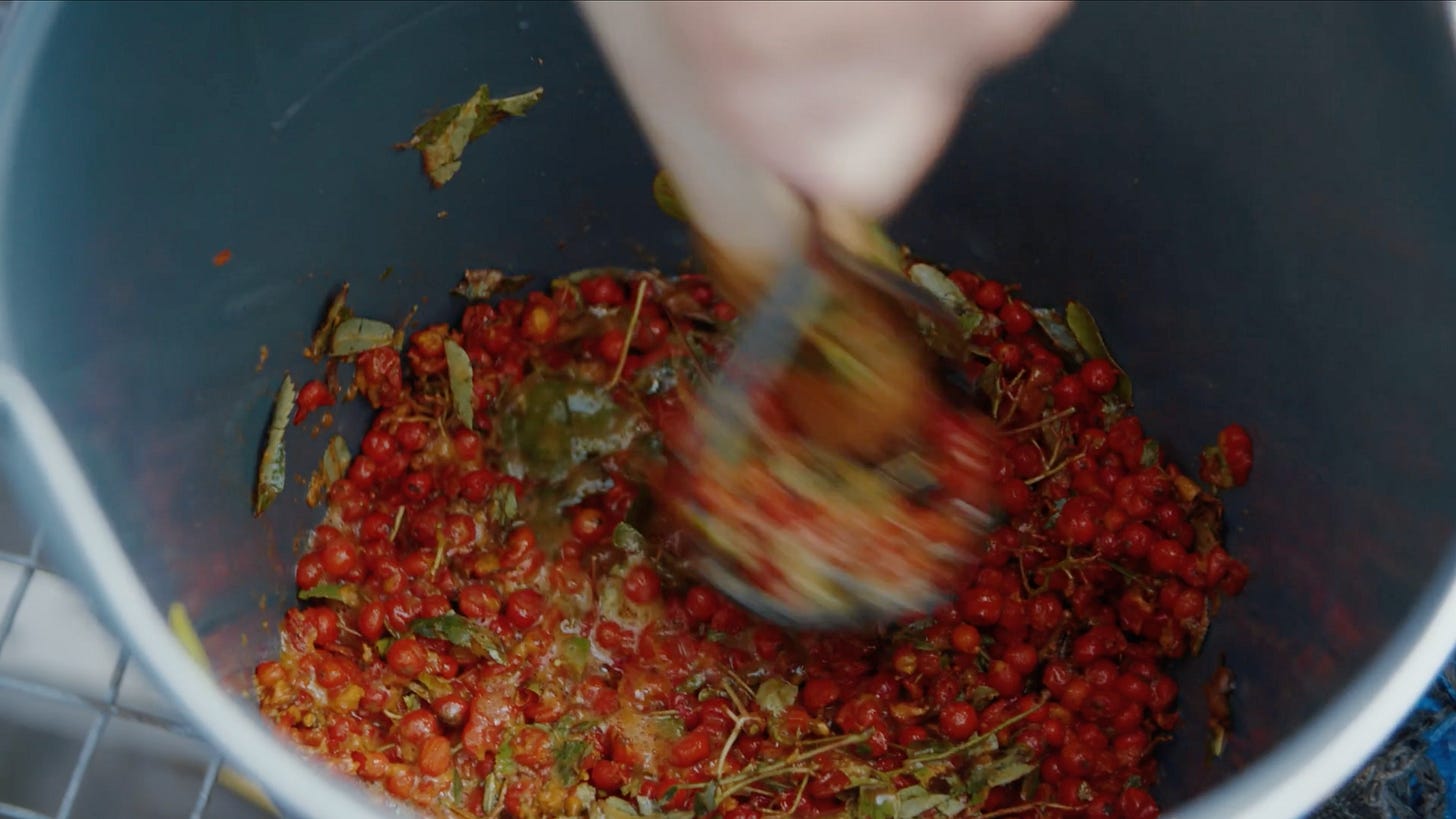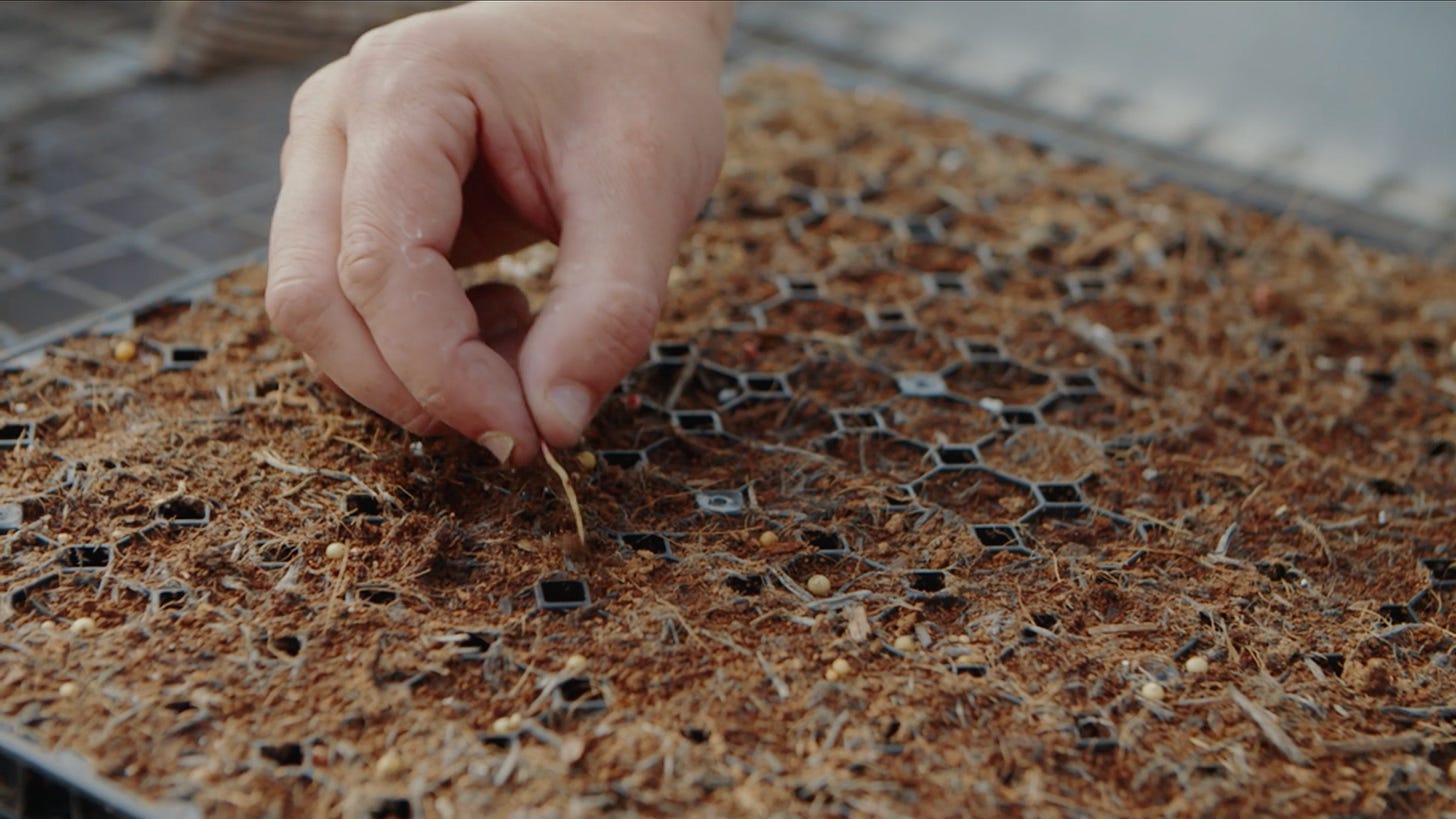This film follows on from the previous film on seed collection, which you can view here. (link will be inserted once film published). The film was produced by Stroma Films.
In this ‘Species Spotlight’ film, Craig shares how to approach processing seeds from the following species:
Rowan (Sorbus aucuparia); Guelder rose (Viburnum opulus) and Yew (Taxus baccata). The rationale for choosing these species is referred to in the previous seed collection film.
Seed processing
Seed processing is the process of extracting seeds. How you extract the seeds depends on whether they are within fruits, nuts, cones or seeds with wings. The aim of processing is to enable and strengthen a successful germination process.
There are other benefits to seed processing too including:
Preventing mould during the pre-treatment stage.
Preventing the fungal infection of damping off after germination occurs.
Guidelines and steps to processing:
It is important to know how to correctly and safely separate seeds from the fruits. In particular the importance of safety when handling Yew berries (as they are toxic). If the seeds are in a fruit, they will need to be separated and cleaned. If berries are collected, they will need to be mixed with water and squashed gently with a potato masher. (See image below). Seeds will sink to the bottom which can be then taken to be stored. Tip - for Rowan berries, the berries can be placed in a sieve and squeezed gently in running water to release the seeds.
Clean equipment that is used when processing seeds is an important part of seed processing to ensure biosecurity is maintained and no cross contamination occurs.
Ensure seeds are dried out correctly (this varies depending on the species). Placing the seeds on paper in a seed tray is one option for this.
The seeds can then be transferred and bagged up in a zip lock bag or placed in an airtight container. Ensure you label the bag with species and date, location of collection and mix with equal parts horticultural sand.
Recording details for FRM (Forest Reproductive Materials)
It is necessary to record certain details of the seeds that are being processed with the Forestry Commission (through the Forest Reproductive Materials or FRM regulation process) in order to obtain a Master Certificate. (This tends to mostly apply if you are selling your plants/trees at a later date but is also good practice in terms of monitoring seeds and future health of trees). The weighing of the seeds is part of this process.
Ensuring correct stratification occurs for the species concerned (such as cold temperatures in a fridge for example) so as to support the natural germination process. (See next section for further details).

Stratification and germination
Each tree species’ seeds vary in terms of their stratification needs and requirements, so check this prior to stratification.
Stratification is a basic technique which aims to mimic a cold winter, as the seeds are designed to germinate in the spring when the temperature is warmer. Very few tree seeds will germinate (which means to produce shoots or to sprout), without exposure to the cold.
Seeds can be stratified artificially in a fridge for example where there is more of a controlled cold temperature to help break the seeds’ dormancy. This tends to lead to more seed being viable for germination and sowing.
It is good to check every week or two to see if germination is starting (white roots start to emerge from seeds). When this happens then the seeds should be sown immediately.
Sowing seeds
When the seeds have germinated, you can sow them in suitable containers and growing medium (usually in root trainers or pots). It is important to sow them when the shoots are still small to avoid damaging them when they are planted.

Our thanks to Craig and Elsoms Trees Ltd and also to Stroma Films for the wonderful film. We hope you enjoy it and do leave a comment below to let us know what you think and share it with others who could benefit from the information.
Hilary Campbell
Growing Diversity Project Coordinator










Share this post